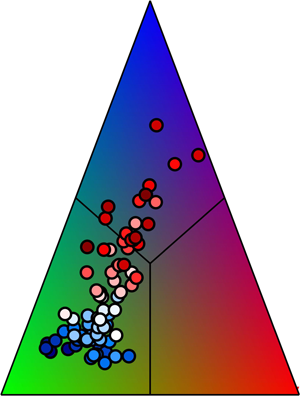Published online by Cambridge University Press: 24 July 2020

Thermal plumes are the energy-containing eddy motions that carry heat and momentum in a convective boundary layer. The detailed understanding of their structure is of fundamental interest for a range of applications, from wall-bounded engineering flows to quantifying surface–atmosphere flux exchanges. We address the aspect of Reynolds stress anisotropy associated with the intermittent nature of heat transport in thermal plumes by performing an invariant analysis of the Reynolds stress tensor in an unstable atmospheric surface layer flow, using a field-experimental dataset. Given the intermittent and asymmetric nature of the turbulent heat flux, we formulate this problem in an event-based framework. In this approach, we provide structural descriptions of warm-updraft and cold-downdraft events and investigate the degree of isotropy of the Reynolds stress tensor within these events of different sizes. We discover that only a subset of these events are associated with the least anisotropic turbulence in highly convective conditions. Additionally, intermittent large-heat-flux events are found to contribute substantially to turbulence anisotropy under unstable stratification. Moreover, we find that the sizes related to the maximum value of the degree of isotropy do not correspond to the peak positions of the heat-flux distributions. This is because the vertical velocity fluctuations pertaining to the sizes associated with the maximum heat flux transport a significant amount of streamwise momentum. A preliminary investigation shows that the sizes of the least anisotropic events probably scale with a mixed length scale ( $z^{0.5}\lambda ^{0.5}$, where
$z^{0.5}\lambda ^{0.5}$, where  $z$ is the measurement height and
$z$ is the measurement height and  $\lambda$ is the large-eddy length scale).
$\lambda$ is the large-eddy length scale).